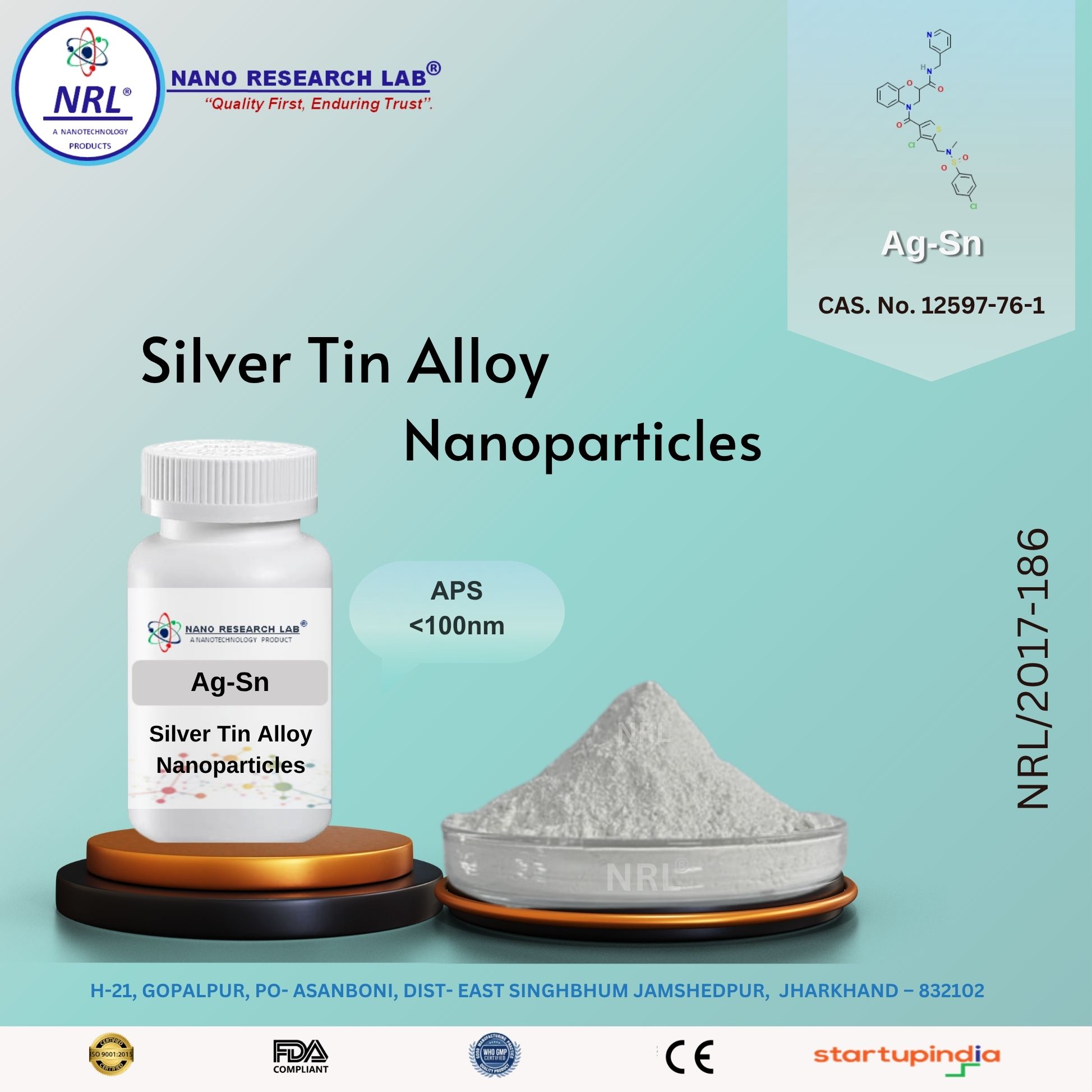
Ag-Sn Alloy Nanoparticles / Nanopowder (Purity >99%, Particle Size <100 nm)
₹1475.00
🧪 Ag-Sn Alloy Nanoparticles / Nanopowder (Purity >99%, Particle Size <100 nm)
⚙️ Technical Specifications
Property | Specification |
|---|---|
Material Name | Silver-Tin (Ag-Sn) Alloy Nanoparticles |
Composition | Ag-Sn (various ratios, commonly 70:30, 80:20, customizable) |
Purity | >99% |
Average Particle Size | <100 nm |
Appearance / Color | Grayish metallic fine powder |
Crystal Structure | Face-Centered Cubic (FCC) / Alloy structure |
Density | ~9.2 g/cm³ (depends on Ag:Sn ratio) |
Melting Point | 750–900 °C (alloy-dependent) |
Electrical Conductivity | High; suitable for conductive applications |
Thermal Conductivity | Excellent; better than pure Sn in alloy form |
Solubility | Insoluble in water; stable under ambient conditions |
CAS Number | 7440-22-4 (Ag), 7440-31-5 (Sn) |
Storage Conditions | Store in airtight container under inert atmosphere; protect from moisture, strong acids, and oxidizers |
🌟 Key Features
High-purity Ag-Sn alloy nanoparticles (<100 nm)
Excellent electrical and thermal conductivity
Good oxidation and chemical resistance
Uniform nanoscale particle distribution
Enhanced mechanical and thermal stability compared to pure metals
Suitable for soldering, conductive inks, and electronic applications
🔬 Applications
1. Electronics & Conductive Materials
Used in conductive inks, pastes, adhesives, and solder materials
Suitable for flexible electronics, printed circuits, and microelectronics
2. Nanocomposites & Coatings
Reinforces polymers and ceramics for enhanced mechanical, thermal, and conductive properties
Applied in anti-corrosion coatings and functional films
3. Catalysis
Acts as a catalyst or catalyst support in chemical and electrochemical reactions
4. Energy & Sensors
Used in batteries, supercapacitors, and sensors to improve performance
5. Research & Material Science
Ideal for nanomaterial synthesis, alloy research, and advanced functional materials
⚠️ Handling & Storage
Store in a dry, airtight container under argon or nitrogen atmosphere
Avoid contact with strong acids, bases, and oxidizing agents
Handle with gloves, protective mask, and eyewear
Use in well-ventilated areas to minimize inhalation of nanoparticles
Keep away from heat, sparks, and direct sunlight
